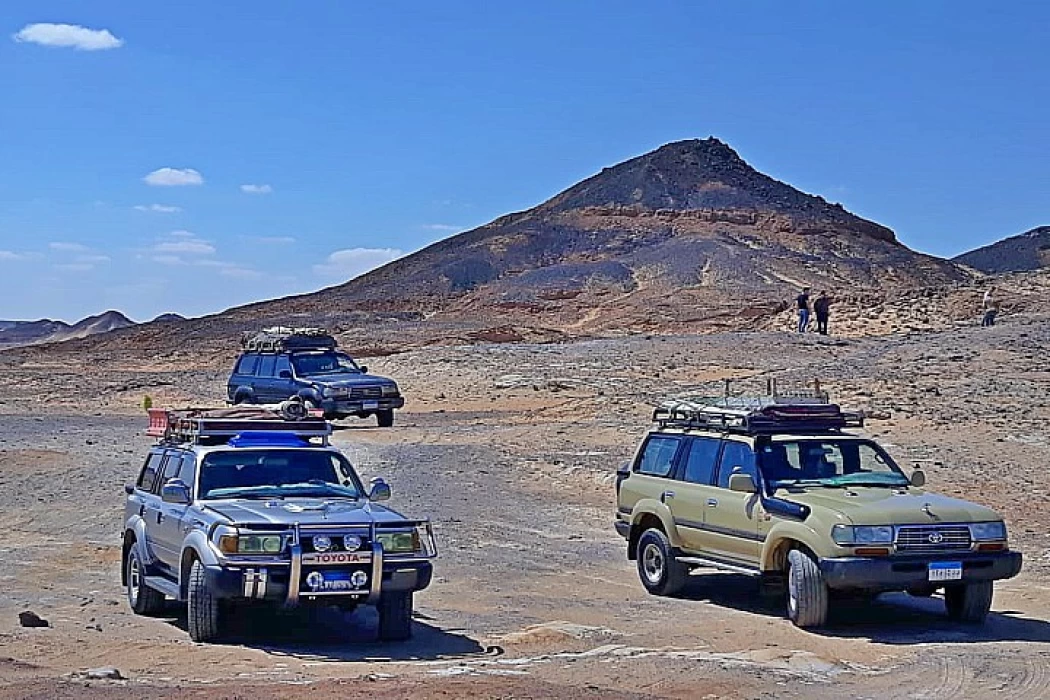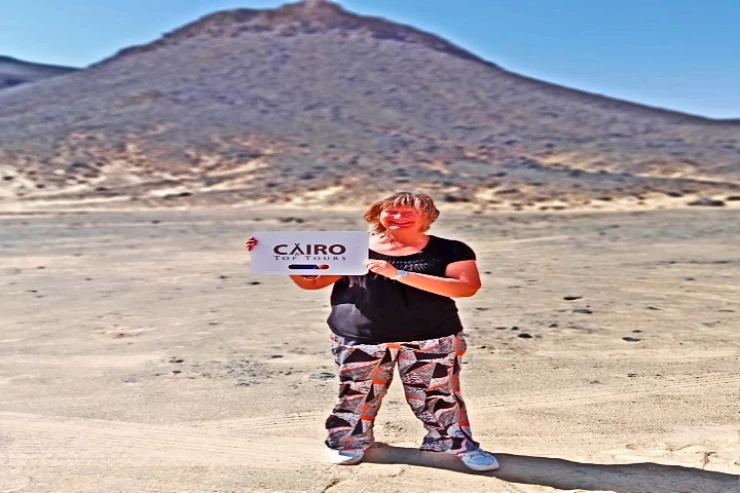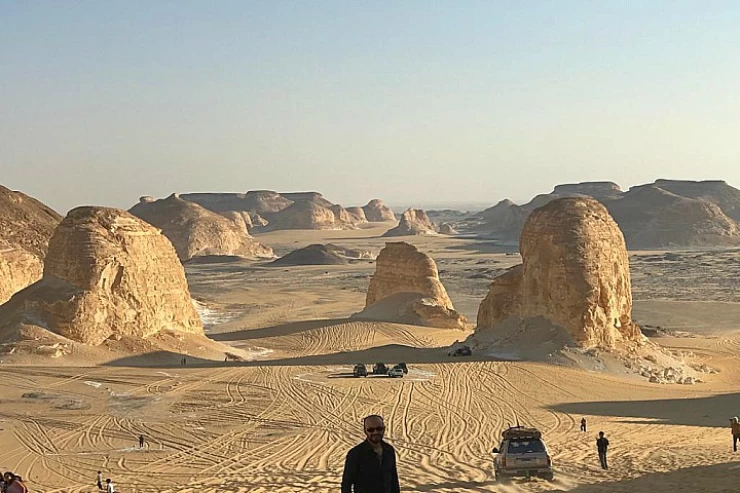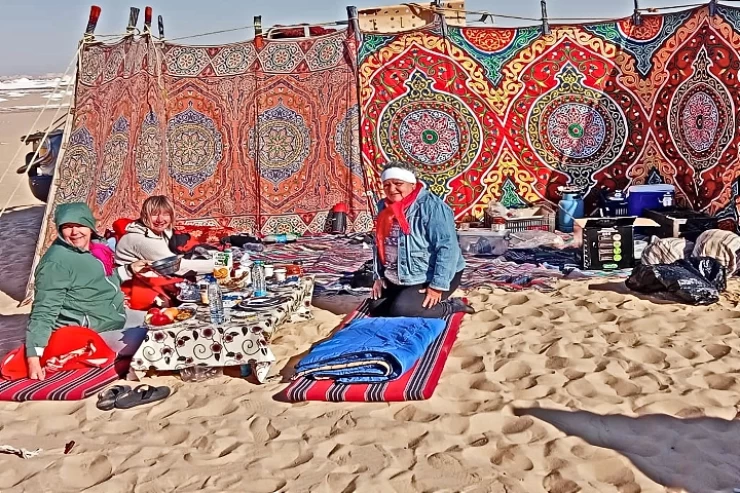
Black Desert | Bahariya Oasis
Bahariya Oasis
Travelers in Egypt have the chance to explore one of the most remarkable areas globally, the Black Desert, on their way to the White Desert. This distinctive landscape was formed by volcanic activity in the region over thousands of years. Currently, the Black Desert is known for its black stones, remnants of solidified lava. In some parts, visitors can see stunning hills covered with these black stones, while other areas feature vast plains with colors ranging from orange to brown.
The mountains in the Black Desert are completely covered in a layer of dust and black rocks, which is how the area got its name. Adventurous tourists can climb one of the tallest peaks to enjoy a panoramic view of the Black Desert and the Bahariya Oasis, taking in the extraordinary sights of its unique terrain and examining the iron content of the black stones.
Accessing the Black Desert is usually done through private four-wheel drive vehicles, as public transportation does not have specific stops in this region. Staying overnight in the Black Desert is also an option for those who want to fully experience its beauty.
If you are interested in tours in Egypt, our various options from Cairo make it easy for you to admire the magnificence of the Black Desert with Cairo Top Tours.
Normally, the White Desert tour includes a stop at the Black Desert, located north of the Farafra Oasis in the Western Sahara. This name comes from the layer of black dust covering its mountains, plateaus, and sands, a result of rock erosion over time. The Black Desert is closer to the Bahariya Oasis than to Farafra, approximately 50 kilometers south of Bawiti. Before leaving the Black Desert to head south, travelers will come across black volcanic hills that once spewed dark volcanic material called dolerite, which forms the black rocks. Climbing English Mountain, the highest point in the Black Desert, offers visitors stunning views of the surreal landscape.
The Black Desert is not like the golden dunes of the Sahara; it derives its name from dark volcanic stones and rocks strewn across its surface. The black-topped hills, remnants of the long-silenced ancient volcanoes, rise sheer into the sky where they meet the harsh sand backdrop, magically contrasting as though one stepped onto another planet.
This is one of the most different areas in the world for the tourists coming to Egypt on their way to the White Desert, the Black Desert. Over thousands of years, the volcanic activity in this site has formed it. Today, black stones of hardened lava decorate the Black Desert of Egypt. In some parts of the area, you observe grand hills covered with black stones and other extensive plains with orange-brown terrain.
The mountains all over the black desert are completely covered with a layer of dust and black rocks, which has given the name to the area. You can climb up one of the highest peaks to get a panoramic view of the whole site of the Black Desert Bahariya Oasis, enjoy the wonderful views of its strange landscape, and observe the iron composition of the black stones.
The most frequent is to access by private four-wheel driving vehicle because the public transport that passes by the area doesn't have an established stop in the Black Desert. There is the possibility to stay in the Black Desert overnight.
The White Desert Egypt tour usually takes you also to visit the Black Desert, located to the north of Farafra Oasis in Western Sahara. This name is called due to the existence of a layer of black powder covering its mountains, plateaus, and sand; this black material came as a result of rock erosion over the years. It is closer to Bahriya Oasis than Farafra, approximately 50 km to the south of Bawiti. Before you leave the Black Desert heading south, you will see black volcanic hills that ages ago erupted a dark volcanic material called dolerite, which is what the black rocks are made of. Climb up the English Mountain, which is the highest point in the Black Desert, and you will be awarded an amazing view of the strange landscape during your White Desert tours.


















